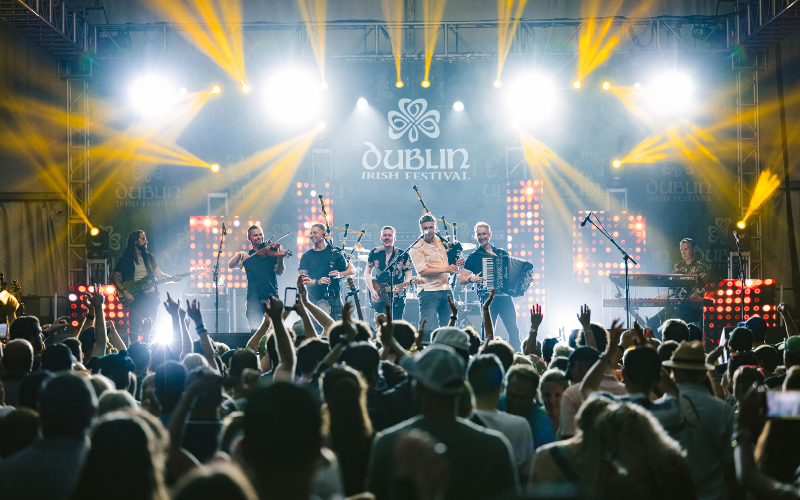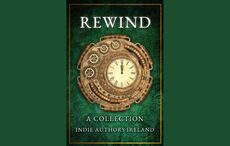University College Cork, the usually quiet Irish university at the centre of an international controversy following a two day exhibition that featured a portrait of the Virgin Mary sporting a bikini, could now face criminal prosecution for allegedly violating recently introduced Irish blasphemy legislation, according to unconfirmed reports from a number of Irish websites.
Although national police (Gardaí) have thusfar declined to offer official confirmation that an investigation into the incident is ongoing (or even for that matter under contemplation), national Dublin-based news website TheJournal.ie led a story into the incident that prompted a columnist with the UK's The Guardian newspaper to speculate that the university could now have a "case on its hands" to answer, for having supposedly wilfully violated the provisions of the 2009 Blasphemy Act.
The Irish legislation, introduced amidst considerable controversy at the time, makes it an offence (felony) for a person to "utter" or "publish" anything that is considered "grossly abusive or insulting" to "matters held sacred by" any religion, and which causes "outrage" amongst a "substantial number of the adherents of that religion".
An important pro-viso in the legislation, however, exonerates one accused of the newly created offence if he/she can show that "a reasonable person would find genuine literary, artistic, political, scientific, or academic value in the matters to which the offence relates."
The case has supposedly been submitted by police for consideration to Ireland's national prosecutor, the Director of Public Prosecutions (the 'DPP' for short, current incumbent James Hamilton), although this fact itself rests on the very unshaky foundation of an anonymous blog entry supposedly emanating from the 'Association of Catholic Lawyers in Ireland' which claimed, in turn, that this had been confirmed to it by a Cork-based super-intendent.
What's rather unfortunate about this whole rather strange incident (the offending portrait was a tiny A3 piece of digital art nestled unassumingly amongst a number of other exhibits on display at the college) is that the people of Ireland deserve a definitive answer as to whether or not University College Cork (UCC) is going to be investigated for this exhibition, but such an answer has, now four days after exhibition began, not been forthcoming.
The Guardian's Pádraig Reidy, himself a Corkman, teases the legal implications of the incident out in this excellent columnn entry (namely, issues affecting Irish free speech, artistic expression, and more), but for all the commentary and debate surrounding the tiny exhibit-piece ( - even the 'America Needs Fatima' association led a prominent international e-petition that collected thousands of signatories opposing the display - ), people are still really none the wiser as to what is actually going on.
It was a 'controversy' that pitted figures as varied as the local bishop and politicians against what seemed like a majority in favour of letting it go ahead, but simply because some of the exhibition's most vocal opponents could easily be caricatured as religious fanatics isn't reason enough in itself to completely dismiss the question of the exhibit's legality from public consideration, or brush off as if they didn't exist calls that it should be investigated. The Garda Press Office hasn't even denied that the Catholic Lawyer Association's blog, which states as fact that the incident is to be investigated, is true.
If legislation exists on the Statute Book (compendium of current Irish law) that could make the exhibition illegal, then the Irish policeforce, as the enforcers of the law, should at the very least let people know what, if anything, they're planning to do about it. If some people were so aggrieved by the exhibit that they were willing to stand outside the college gates protesting in the pouring rain for two whole days, then the least they deserve is an answer to this question. Stupefied silence simply isn't good enough.
And legally, given the fact that a "substantial number" of Catholics in this country did indeed feel "outraged" by the exhibit, it really comes down to whether or not the elusive "reasonable person" would have considered the depiction to have enough artistic merit to offset whatever illegality it might otherwise have accrued during the course of its display. It's a legal conundrum that can't easily be answered either way.
Whether or not the exhibit was 'blasphemous' is actually a fairly close call, but one which the Gardaí, at least in the interest of clarifying the highly controversial blasphemy debate, shouldn't simply choose to ignore.
The Danny Boy blog is now also on Twitter!
It was a 'controversy' that pitted figures as varied as the local bishop and politicians against what seemed like a majority in favour of letting it go ahead, but simply because some of the exhibition's most vocal opponents could easily be caricatured as religious fanatics isn't reason enough in itself to completely dismiss the question of the exhibit's legality from public consideration, or brush off as if they didn't exist calls that it should be investigated. The Garda Press Office hasn't even denied that the Catholic Lawyer Association's blog, which states as fact that the incident is to be investigated, is true.
If legislation exists on the Statute Book (compendium of current Irish law) that could make the exhibition illegal, then the Irish policeforce, as the enforcers of the law, should at the very least let people know what, if anything, they're planning to do about it. If some people were so aggrieved by the exhibit that they were willing to stand outside the college gates protesting in the pouring rain for two whole days, then the least they deserve is an answer to this question. Stupefied silence simply isn't good enough.
And legally, given the fact that a "substantial number" of Catholics in this country did indeed feel "outraged" by the exhibit, it really comes down to whether or not the elusive "reasonable person" would have considered the depiction to have enough artistic merit to offset whatever illegality it might otherwise have accrued during the course of its display. It's a legal conundrum that can't easily be answered either way.
Whether or not the exhibit was 'blasphemous' is actually a fairly close call, but one which the Gardaí, at least in the interest of clarifying the highly controversial blasphemy debate, shouldn't simply choose to ignore.
The Danny Boy blog is now also on Twitter!




Comments